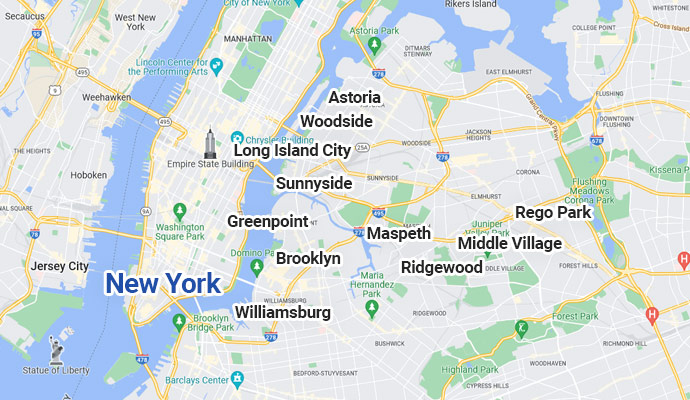Deep Tissue Massage in New York City
If you can tolerate more pressure, or are actively physically fit, you may prefer to book a Deep Tissue massage for relief from muscle pain.
A Deep Tissue massage concentrates on specific muscle groups (unlike a Swedish massage which can be slow and gentle). By using deeper and more targeted pressure, the therapist affects muscle tissue to achieve deeper results. The slow and deep strokes using for a deep tissue massage exert sustained pressure, which is designed to target deeper layers of the fascia and muscle tissue.
What Should You Expect When You Get a Deep Tissue Massage?

As a client, there are things you should expect when you go for a Deep Tissue massage appointment.
- Warm-up: At the early stages of the massage, the Deep Tissue massage might feel more like the Swedish massage. This is because the massage therapist will prepare your muscles by warming them up. This process involves exerting light pressure on areas that need more attention. Once the muscles are fully prepared, your massage therapist will start applying different techniques for different areas.
- Stage Two: The two most frequently used techniques in Deep Tissue massage are friction and stripping.
- Friction: Friction involves applying measured pressure across the muscle grain to realign tissue fibers and ease adhesions.
- Stripping: in stripping the massage therapist applies deep, gliding pressure using a thumb, knuckles, forearm, or elbow.
Reasons for Getting a Deep Tissue Massage
Even though Deep Tissue massage can be a bit uncomfortable, it can lower your heart rate and minimize stress hormones while encouraging the release of serotonin and oxytocin which boost your mood and allows for deeper relaxation. Ideally, Deep Tissue massage is designed to alleviate many ailments including:
- Chronic aches and pains
- Lower and upper back pain
- Stiff neck
- Break up muscle and scar tissue or ”knots”
- Soften adhesions that could be limiting motion and inhibiting circulation
- Overall loosening of your muscles
- Tennis elbow
- Limited movement
- Chronic muscle aches
- Ease osteoarthritis pain
- Treat fibromyalgia pain
Communicating with Your Massage Therapist

Despite its ability to ease your pain, Deep Tissue massage can be slightly uncomfortable, more so when pressure is exerted in problematic areas. Therefore, it’s wise for you to communicate any form of discomfort to let your massage therapist know when the pain increases. It’s important to note that even though Deep Tissue massage isn’t as gentle as Swedish massage, the pain might not necessarily indicate a positive effect, therefore it’s always best to communicate what is going on for you at any given moment.
As a client, you need to maintain your expectations of Deep Tissue massage treatment at manageable levels. This is because some clients request their therapists to exert more pressure to get more results. Doing this might lead to more harm than good. If possible and under the guidance of your therapist, increase your frequency of getting Deep Tissue massage instead of seeking immediate results through means that might sabotage the gains of the process, and cause unnecessary pain. It does not need to hurt to be effective.
When your therapist exerts more pressure to reach deeper muscle tissues, you might experience a lot of pain. This pain will force your body muscles to contract and render the massage therapist’s efforts fruitless. Only in rare cases post-surgery, should the “no pain, no gain” school of thought be put into action.


